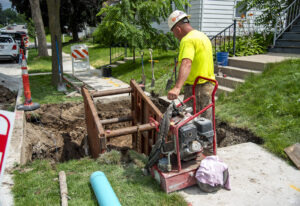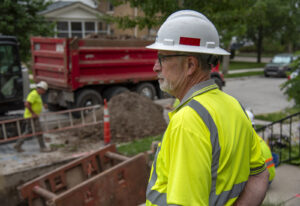 Coordinating private utilities during municipal construction projects can be one of the most complex and time-consuming aspects of project management. Whether you’re working on a street reconstruction, multi-use trail, or underground infrastructure project, utility conflicts can derail timelines, inflate costs, and frustrate stakeholders. In Wisconsin, a structured framework is available — the Trans 220. While officially applicable to state highway projects, the Trans 220 provides a valuable blueprint for local projects when common coordination, management, and documentation are thoughtfully adapted.
Coordinating private utilities during municipal construction projects can be one of the most complex and time-consuming aspects of project management. Whether you’re working on a street reconstruction, multi-use trail, or underground infrastructure project, utility conflicts can derail timelines, inflate costs, and frustrate stakeholders. In Wisconsin, a structured framework is available — the Trans 220. While officially applicable to state highway projects, the Trans 220 provides a valuable blueprint for local projects when common coordination, management, and documentation are thoughtfully adapted.
What Is Trans 220?
Wisconsin Administrative Code Chapter Trans 220 outlines the procedures for coordinating utility relocations for state trunk highway improvement projects. It defines responsibilities, timelines, and documentation requirements to ensure utility conflicts are resolved before construction begins.
Key elements include:
- Early notification to utility facility owners
- Submission of project plans showing utility conflicts
- Private utility company work plans detailing relocation scope and schedule
- Distinct timelines for responses and coordination
Why Use a Quasi-Trans 220 Approach for Municipal Projects?
Although Trans 220 is not mandatory for non-state projects, adopting a quasi-Trans 220 approach — using its forms, language, and structure — has proven highly effective for municipal work. Here’s why:
Familiarity Breeds Efficiency
Utility companies are accustomed to Trans 220 forms like the Utility Worksheet (DT2236) and Acknowledgment Form (DT1078). By using these familiar documents, it can reduce confusion, speed up responses, and improve accountability.
 Structured Communication
Structured Communication
The quasi-Trans 220 method provides a clear framework for:
- Initial outreach
- Submitting municipal plans to provide private utility facilities to identify conflicts
- Private utility facility work plan development
- Coordination meetings and relocation schedules
This structure minimizes miscommunication and ensures all parties are aligned.
Proactive Conflict Resolution
By identifying utility conflicts early and documenting them clearly, municipalities can avoid costly relocations during construction or having to change the design in the field to avoid impacts that could have been avoided.
Best Practices for Utility Coordination
Based on standard guidance, here are some practical steps to follow:
- Start early: Send preliminary plans to utilities as soon as project plans are developed.
- Use standardized forms: Include standard forms in your communication packets.
- Document everything: Keep records of correspondence, meeting minutes, and approvals.
- Monitor during construction: Ensure utility relocations are completed as planned and adjust as needed.
Final Thoughts
Utility coordination doesn’t have to be a headache. By adopting established methods, like the quasi-Trans 220 approach, municipalities can streamline communication, reduce risk, and keep projects on schedule. It’s a proven method that respects the needs of utility companies while protecting public investment.
